Start Here: 5 Crucial Steps to Decrease Toxins in Your Home
Welcome to Gimme the Good Stuff! Are you here because you want to know how to detox your home to make it safer for your family?
I’ve been obsessively researching and writing about safer products since 2010. That means there’s A LOT of content on this site, which I hope is helpful!
I also understand that all of the posts and guides can feel overwhelming to browse. You’ve come here because you want to know how to detox your home and life, but you might not know where to start.
As you learn more about the toxic junk that’s almost everywhere, it’s easy to either: 1) Want to put your head back in the sand and forget you ever cared; or 2) Feel like you have to take out a second mortgage (while also quitting your job to free up time) to clean up everything right away. Please don’t fall into either of these traps!
My motto from the beginning has been “Stay Sane.” I know from my own journey that the more you learn, the more you might feel crazed and anxious. I also know that chronic stress itself is toxic. SO—let’s take a breath and talk about actionable priorities that will help you detox your home/life.
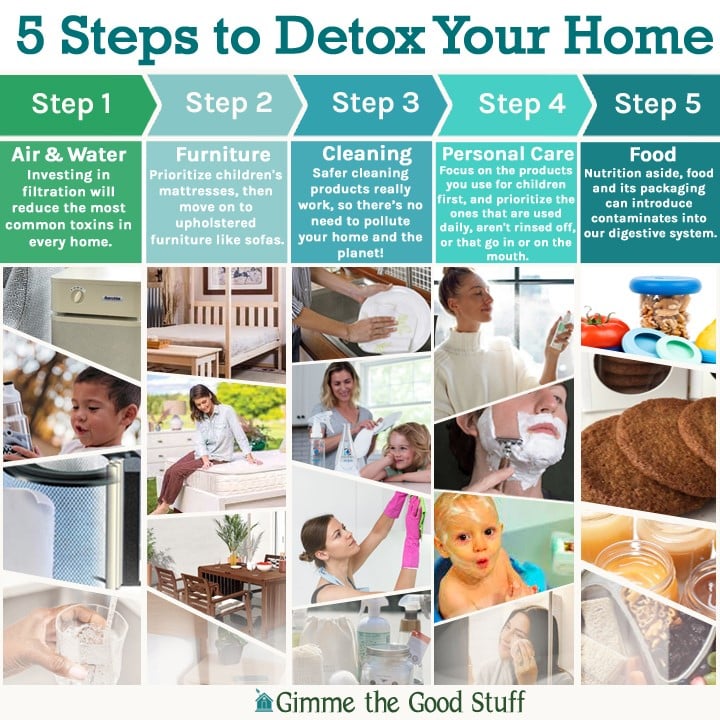
How to Detox Your Home with This Guide
This post will help you prioritize, so that you can take five important home detox steps and then move on with your life! I’m going to tell you exactly what to swap to make this as easy as possible.
My goal is that you’ll get the biggest bang for your dollars and your efforts, and feel an immediate increase in your peace of mind.
You can tackle these tasks in the order I suggest below, or you jump into the area that feels easiest for you to take on first.
At the end of each section I will include a shortcut for you to simply “do what I do.” This is a sentence or two that tells you the exact products I have bought to eliminate my own anxiety about that category of toxins. This is for those of you who really don’t have time to be perusing those EWG rankings and just want to get straight to the solution.
I will also provide a budget-friendly option that will often entail a bit more effort but which can also be very effective when it comes to reducing toxins in your home.
Note: This guide is meant to be simple, so I won’t go into detail about specific toxins. To know more about what they are and why they’re concerning, you can check out the links in each section.
Let’s get started!
Step 1: Filter Air & Water
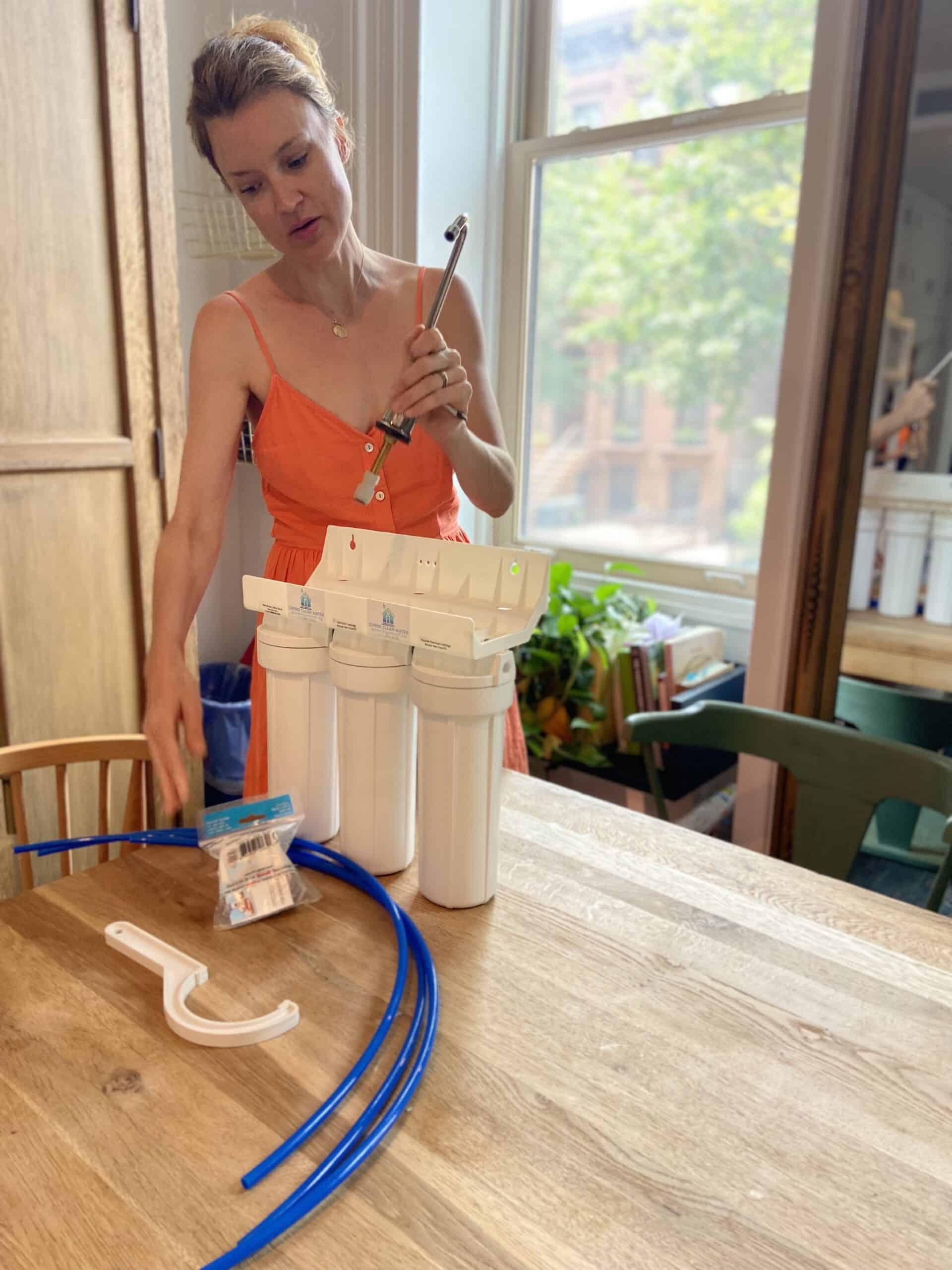
Why This Matters
Investing in robust filtration systems for air and water will tackle a bunch of toxins that we know are in pretty much every home.
Indoor air is often more polluted than outdoor air, and even seemingly pristine well water can have concerning levels of environmental contaminants as well as naturally occurring toxic substances.
Once you’re set up with the right filtering devices, everyone in your home enjoys cleaner water and air whenever they are home. You’ll only have to worry about replacing filters once every year or more. This is really the easiest, most passive way to eliminate a ton of toxins.
How to Filter Air & Water
Learn more about air filtration and check out the products we recommend in this post. Learn more about water filtration and check out the best water filters in this post.
Shortcut: Here’s What I Do…
I have three of these air filters spaced around my home, and this water filter under my kitchen sink. I change the air filters every 5 years, and the water filter annually.
Recommended Products for Air & Water Filtration
-
 Product on saleAllerAir MobileAir Plus – Desktop Air Purifier – Carbon & HEPA$299.00 – $329.00
Product on saleAllerAir MobileAir Plus – Desktop Air Purifier – Carbon & HEPA$299.00 – $329.00 -
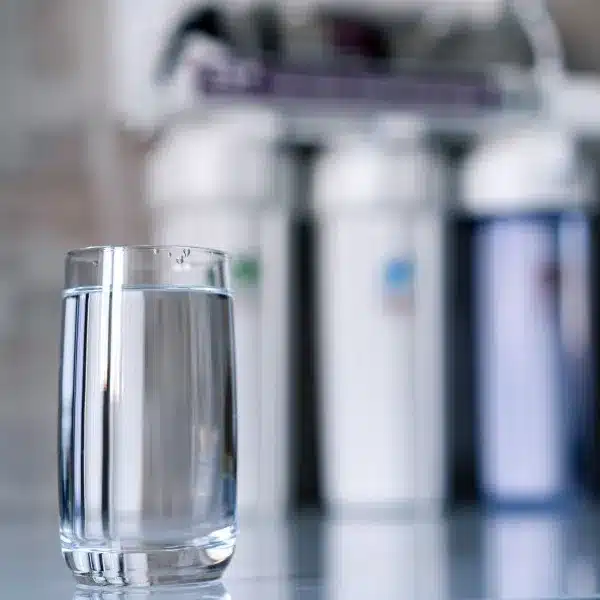
-
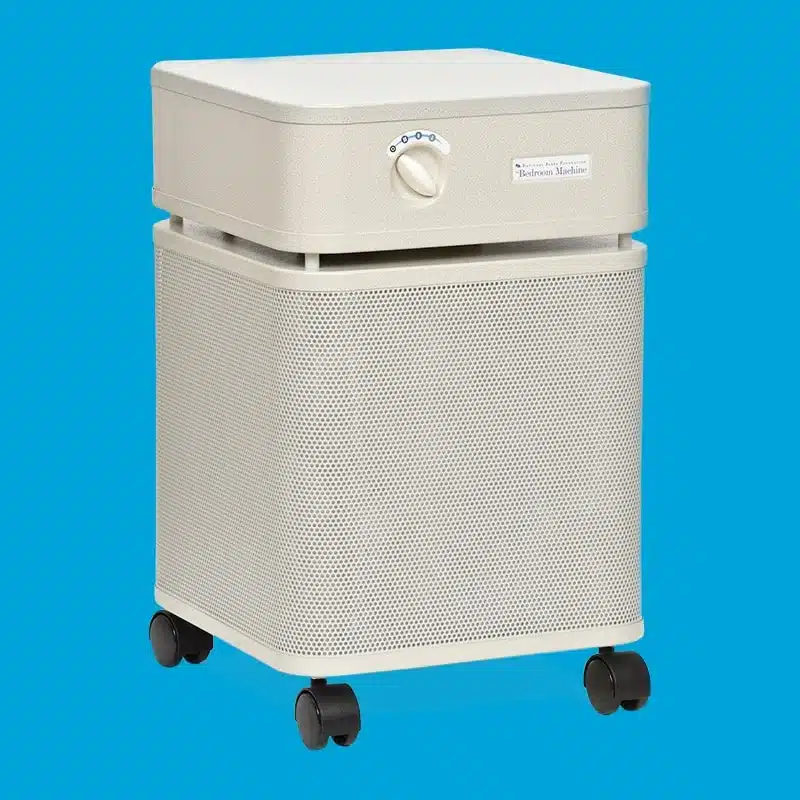
Budget-Friendly Ways to Reduce Toxins in Air & Water
Passive air filtration–like plants or these charcoal bags–will remove some airborne contaminants, and opening windows goes a long way towards clearing the air. For water, some pitcher filters remove PFAS, fluoride, and much more.
Step 2: Upgrade to Safe Mattresses & Upholstered Furniture
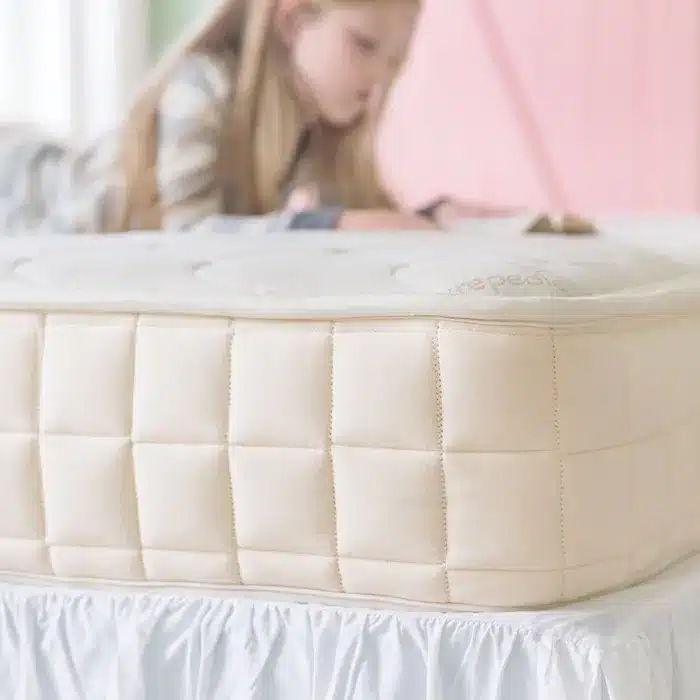
Why This Matters
We spend hours each day sleeping, and conventional mattresses can pollute that otherwise crucially restorative time.
Many of us also spend a lot of time on and around our couches and other upholstered furniture–unfortunately, conventional upholstered furniture has many of the same risks as conventional mattresses.
If you’ve seen the latest studies on flame retardants alone, you know the importance of toxin-free furnishings!
How to Find Non-Toxic Furniture
The clean mattress market has expanded to include some more affordable options in recent years. Still, you may need to pace yourself as you upgrade to toxin-free mattresses, especially if you have a larger family.
Prioritize upgrading baby and kid mattresses first, since kids are smaller and still developing and therefore more susceptible to toxic exposures. If your kids spend most of their time in your bed, then start with that one!
Check out our Safe Mattress Guide for all the info and recommendations you’ll need.
Once you’re sleeping peacefully on the best mattresses, move on to replacing upholstered furniture, beginning with your primary sofa. See our Safe Sofa Guide for more info and recommendations.
Bonus: Wooden furniture is generally less problematic than upholstered furniture. But if you’re looking to upgrade tables, bed frames, bookshelves, desks, etc., check out our Non-Toxic Wooden Furniture Guide.
Shortcut: Here’s What I Do…
We sleep on Soaring Heart mattresses. Most of our upholstered furniture is Medley or Cisco Brothers. Medley offers my readers 5% on their website with code GIMME5. If you work with me as a consulting client, I can place orders for you at Cisco for 10% off (email me if you want to talk about this.)
Budget-Friendly Ways to Reduce Toxins from Furniture
Investing in robust air filtration (see Step 1) is generally cheaper than swapping out mattresses. Vacuuming or wet-mopping frequently will remove the contaminated dust that can accumulate around our homes from upholstered furnishings. The most affordable mattress that’s entirely free of toxins and has top level certifications is Happsy. (Use code GIMME225 for an additional $225 off Happsy mattresses.)
Recommended Mattresses for a Less Toxic Bedroom
-
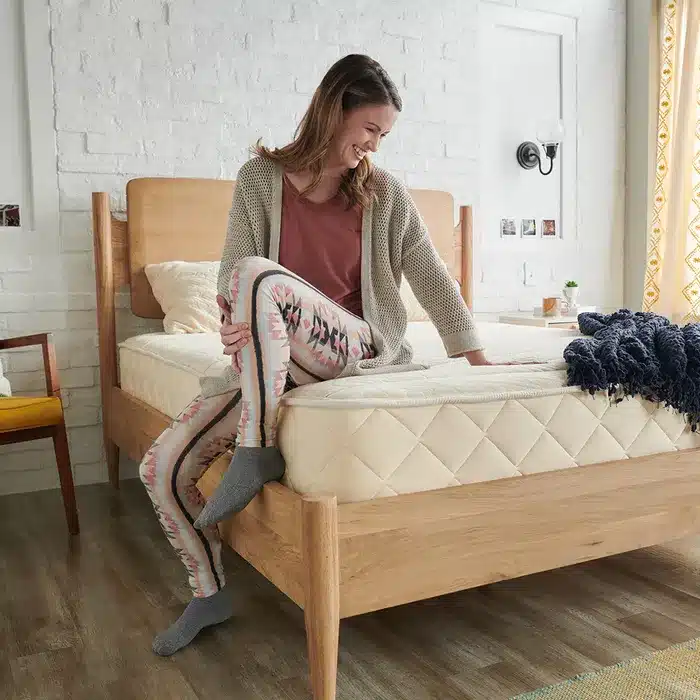
-
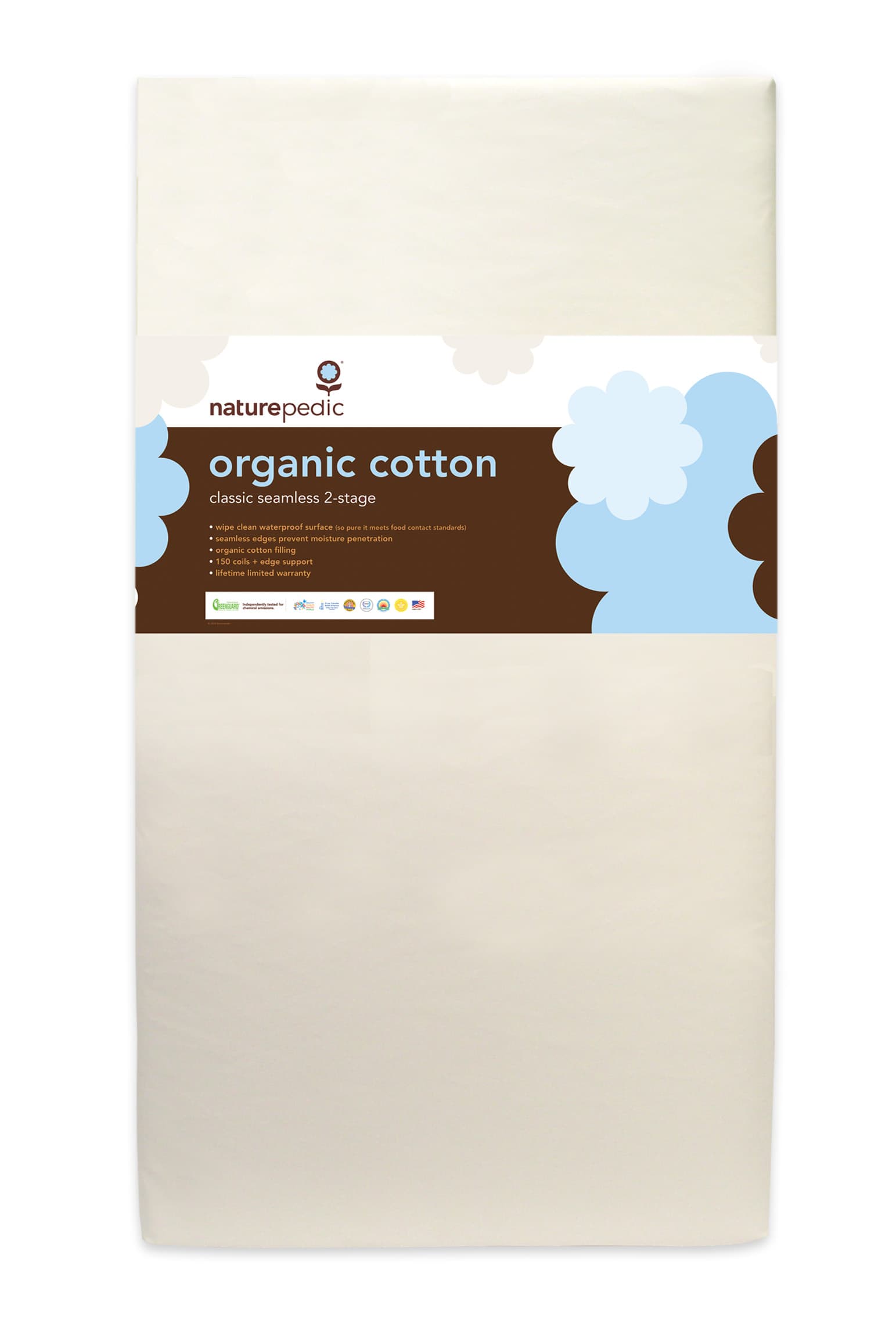
-
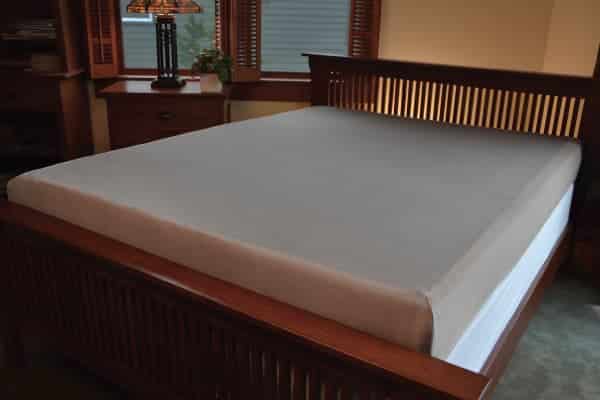 Soaring Heart Organic Latex Support Mattress$1,899.00 – $3,199.00
Soaring Heart Organic Latex Support Mattress$1,899.00 – $3,199.00
Step 3: Use Truly Clean Cleaning Products
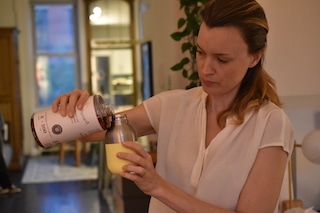
Why This Matters
The ingredients in most conventional household cleaning products are linked to everything from hormone disruption to cancer. You truly don’t need scary chemicals to clean effectively, I promise. With many safe and effective cleaning products on the market, there’s just no need to be polluting your house (and the planet!) with Bad Stuff. A bonus is that once you know you have safe cleaning products, you won’t think twice about having your kids pitch in with house-cleaning!
How to Find Safe Cleaning Products
Check out our cleaning products guides to learn more about non-toxic cleaning products and choose some new favorites. You can also shop our favorite cleaning products here.
Budget-Friendly Ways to Reduce Toxins from Cleaning Products
Homemade cleaning products truly can be effective. Here is a nice roundup of recipes. If you want the cheapest store-bought option, try this for all-purpose cleaning. You also might consider Branch Basics or Healthynest–over time, refilling your own bottles will save your wallet and the environment!
Recommended Clean Cleaning Products
-
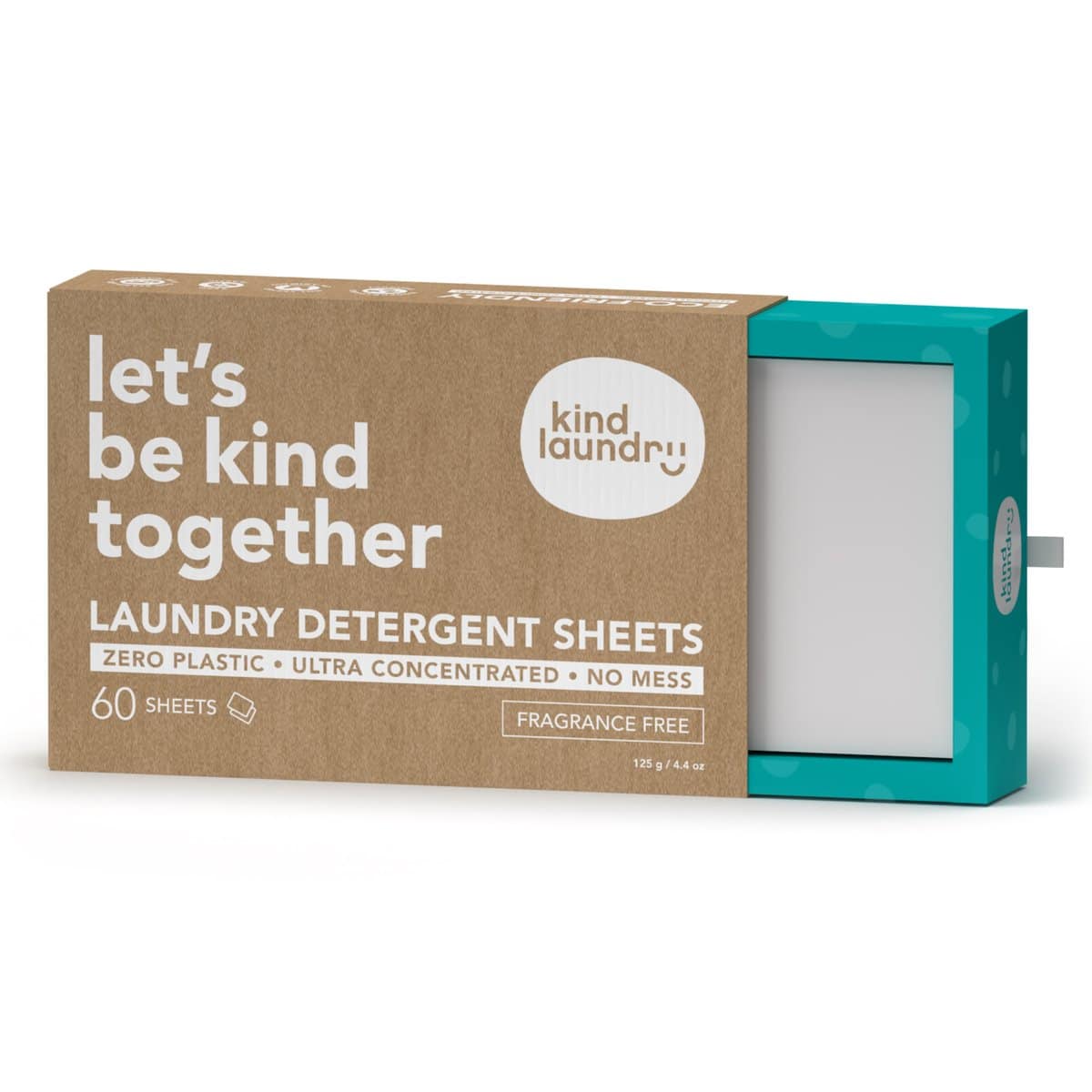
-

-
 MamaSuds All-Purpose Cleaner$12.50
MamaSuds All-Purpose Cleaner$12.50 -

-
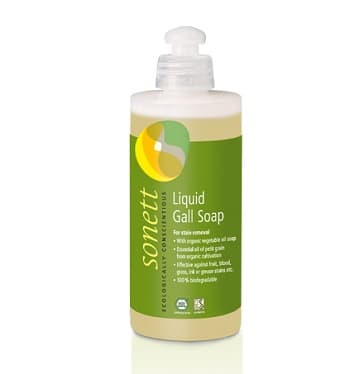
-
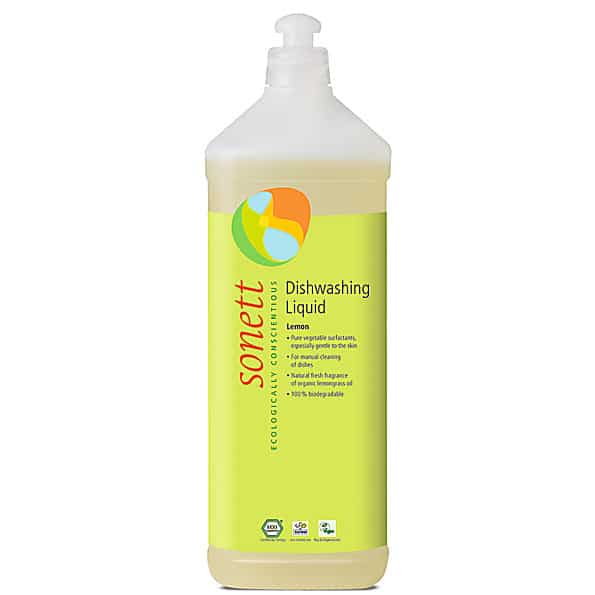
Step 4: Choose Safer Personal Care Products
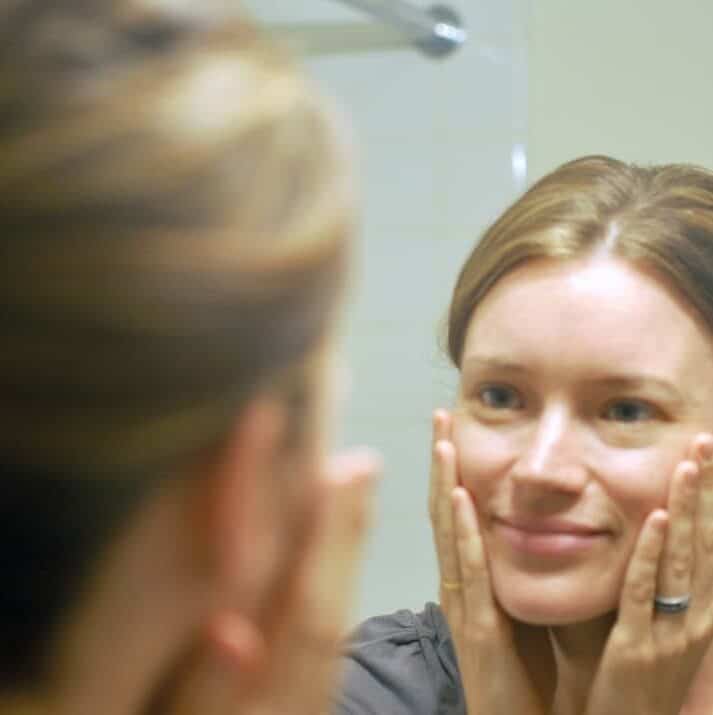
Why This Matters
Personal care products are daily staples that we put them all over our bodies (and sometimes in our mouths!). You can see why cleaning up this category is so important
It’s really easy to be misled by slick marketing that suggests that skin and hair products are natural/green/safe/organic/nontoxic, etc. But many of these products, even those made for newborns, often contain concerning or downright toxic ingredients.
How to Find Safer Personal Care Products
I see people get overwhelmed in this category because they have a long list of personal care products to replace, and there are so many brands and products to consider. Pace yourself! Check out our Safe Product Guides for a range of different products. Here’s what to tackle first:
- Focus on the products you use for the littlest members of your family (like baby lotion and baby wash/shampoo), then move on to the adults.
- Prioritize those products that you use daily, especially if they stay on the body rather than are rinsed off immediately (think body lotion and deodorant versus soap and shampoo).
- Products that go in your mouth (like toothpaste) and around your mouth (like lipstick) also rank higher in importance.
Shortcut: Here’s What I Do…
Don’t want to read labels? The personal care brands I trust across the board for kids include Babo, Healthynest, and Carina.
For myself, I rely on Pure Haven, Crunchi, Beautycounter, All Good, Soapwalla, and Marie Veronique. Of course, every single item we sell in our online store meets our safety standards.
Budget-Friendly Ways to Reduce Toxins from Personal Care Products
Babies and kids really need very little in the way of personal care products, and you can use DIY formulas for kids and even for yourself. I like this roundup of recipes. Dr. Bronner’s makes an affordable multi-purpose castile soap that my mom has been using for 50 years!
Recommended Personal Care Products
-
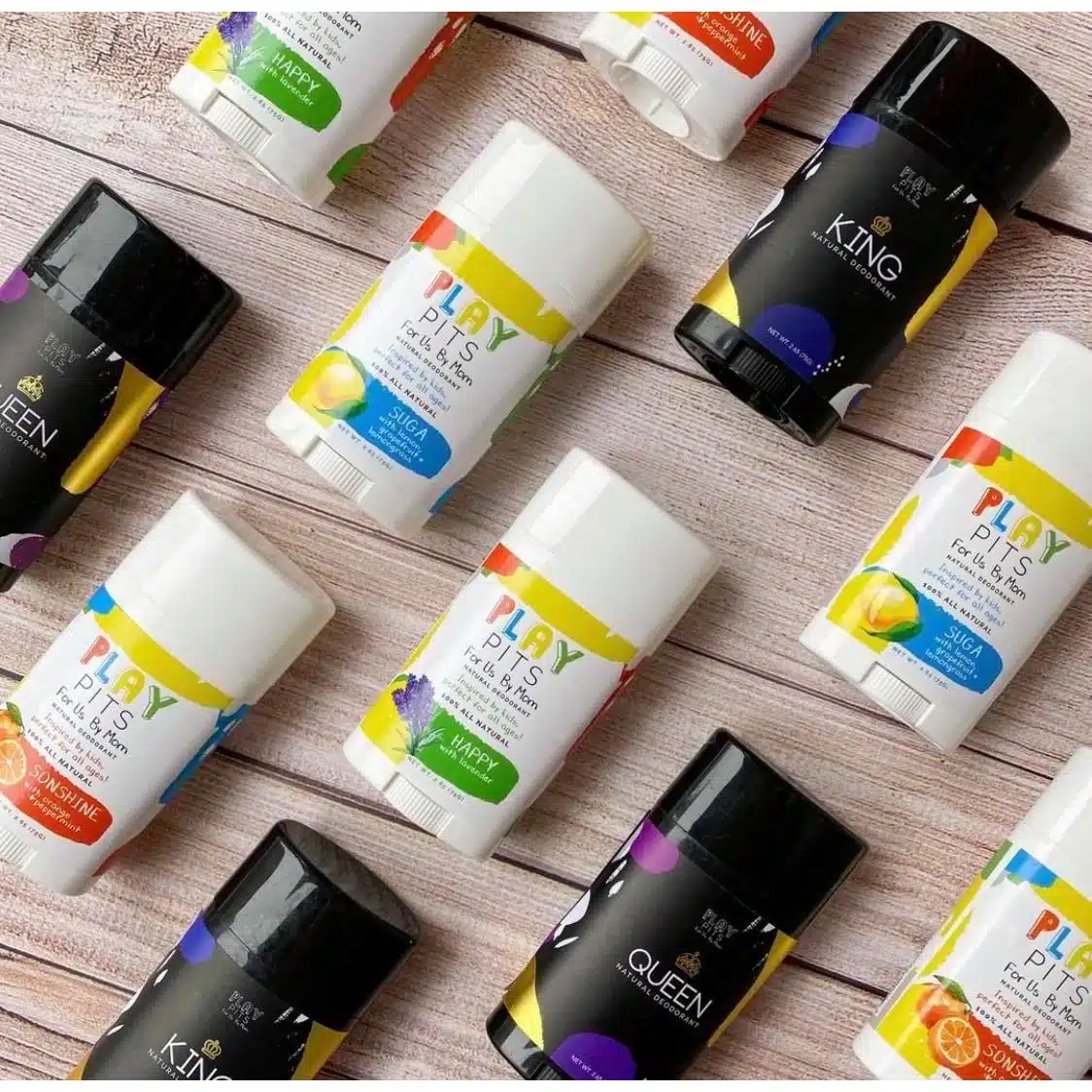
-
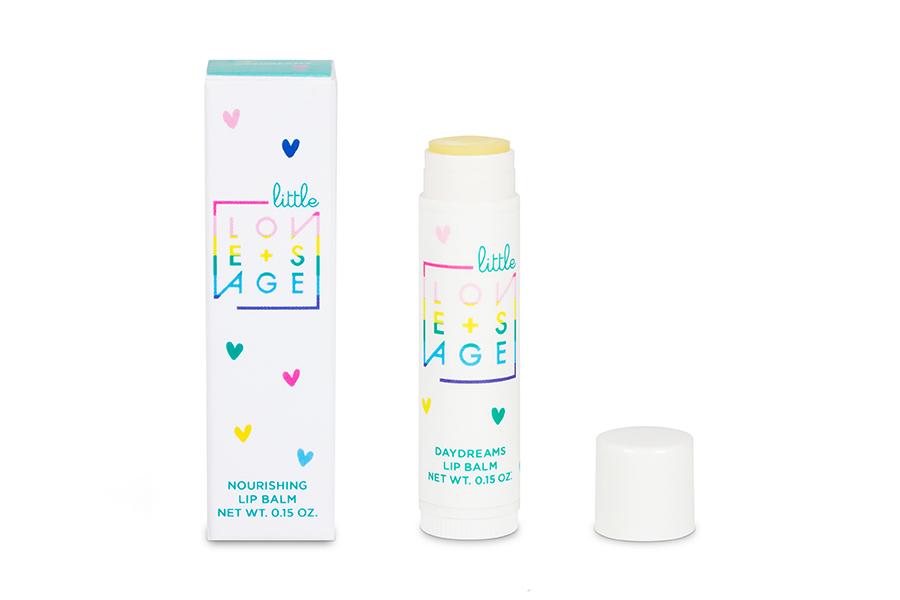
-

-
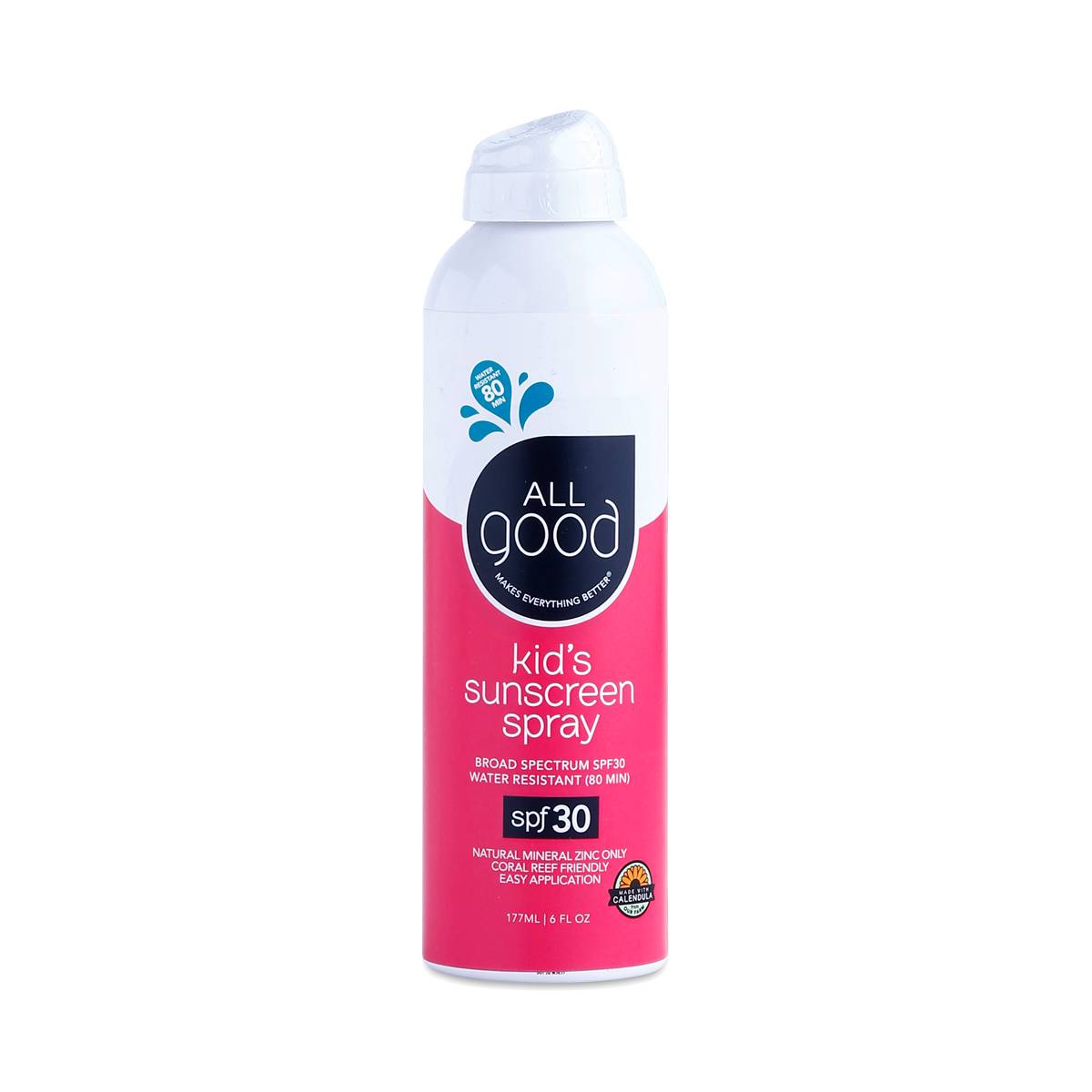
-
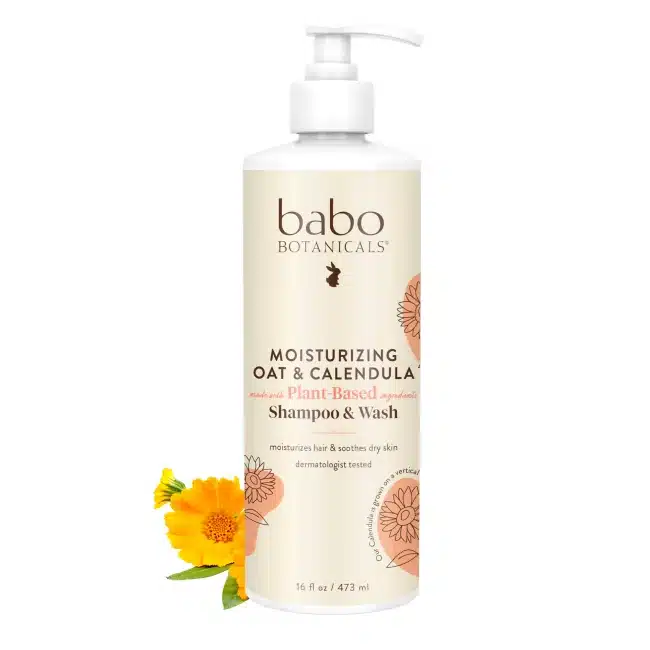
-
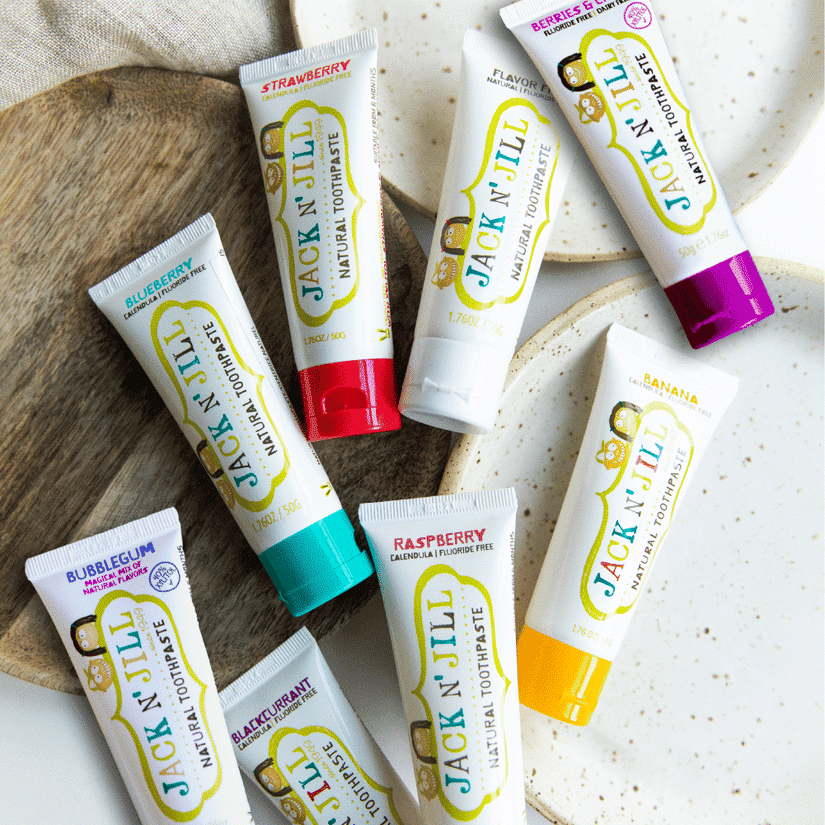 Product on saleJack N’ Jill Natural Calendula Toothpaste$1.99 – $6.99
Product on saleJack N’ Jill Natural Calendula Toothpaste$1.99 – $6.99
Step 5: Clean Up What You Eat & Drink
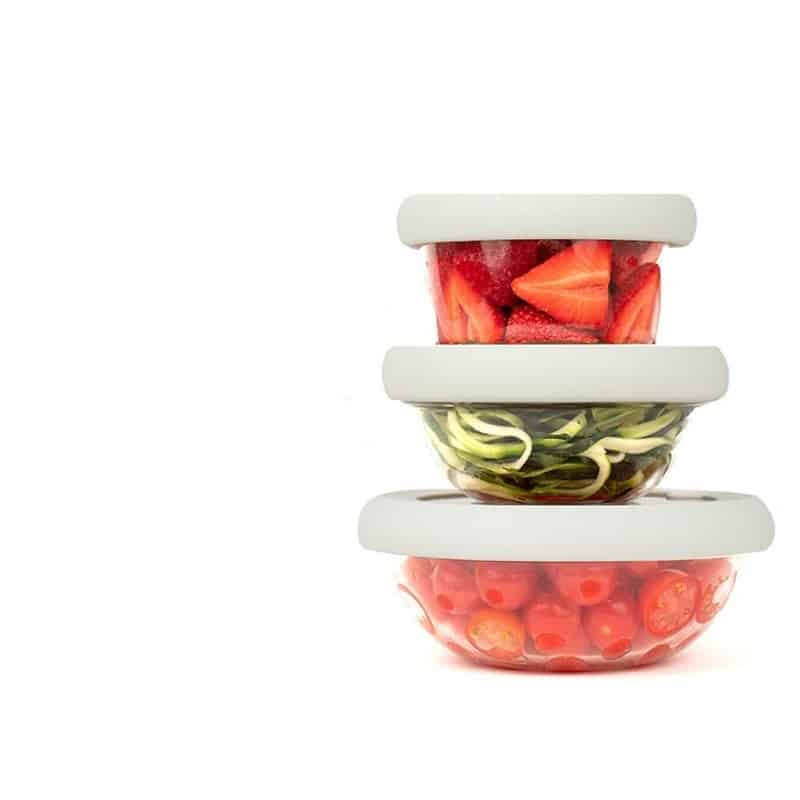
Why This Matters
We eat and drink every single day, multiple times a day, so cleaning up our consumables can really help reduce toxin exposure. Nutrition aside, food and its packaging can introduce contaminates into our digestive system.
How to Reduce Toxins in Food
The bulk of what you eat should be organic, whole (or minimally processed) foods. Do what suits your life and your budget, and if you need ideas, be sure to follow us on Instagram for easy recipes. Some of my other bigger-bang-for-your-buck ideas:
- Here are 15 healthier packaged snack ideas.
- Here’s how to get 8 superfoods into yourself (and your kids).
- This meal kit service is truly healthful and clean.
I always suggest focusing on what you feed to the smallest members of your family, especially the dietary staples (like baby formula, baby food, bread, and milk).
For grownups, I recommend you prioritize cleaning up your caffeine source since this is something that is both a daily habit and a potential source of a lot of toxins. (And if you’re a daily wine drinker–no judgement!–make sure you are choosing clean wine.)
Beyond the food itself, you can also reduce chemicals by replacing plastic food- and drink- containers with those made from glass and stainless steel. Don’t make yourself nuts here–almost everything comes in plastic packaging, so this is about reduction, not eradication. Try to make the following changes, and you can stop worrying about the fact that everything from sprouted bread to seaweed snacks comes encased in plastic:
- Safer baby bottles and sippy cups are high-priority, since they are used often by the least fully formed humans in our homes.
- Upgrade your cookware with better options from our Safe Non-Toxic Cookware Guide.
- Cook with filtered water as much as possible.
- Don’t microwave your food in plastic containers.
- Use mostly (it doesn’t have to be exclusively) plastic-free storage for leftovers and lunches.
Shortcut: Here’s What I Do…
I buy plenty of packaged foods in plastic, don’t get me wrong. I have, however, invested in enough glass/silicone/stainless steel storage pieces to have eliminated the need for plastic wrap, bags, and Tupperware.
Recommended Plastic-Free Food Storage Products
-
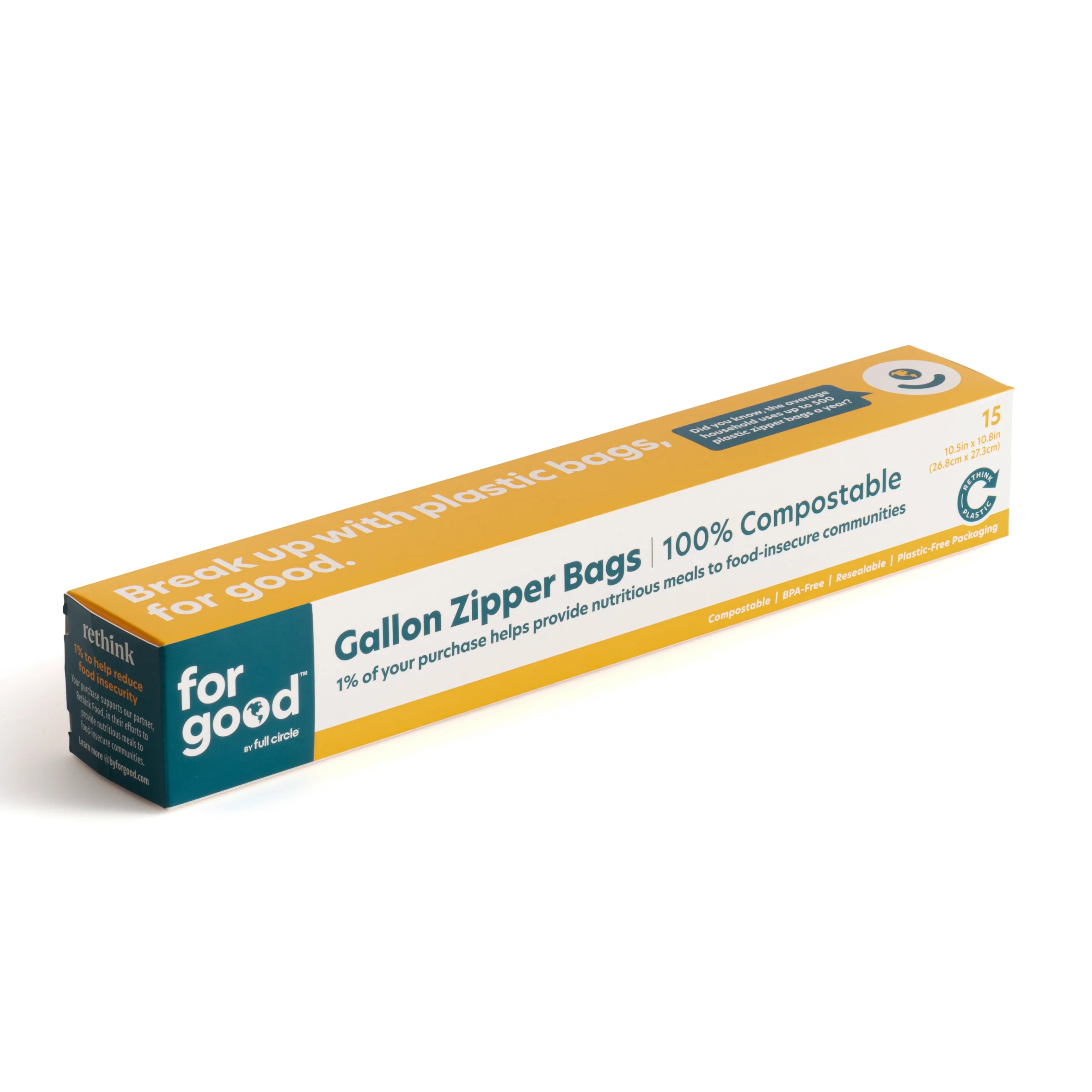
-

-

-
 Zip Top Silicone Bags$9.99 – $12.99
Zip Top Silicone Bags$9.99 – $12.99 -
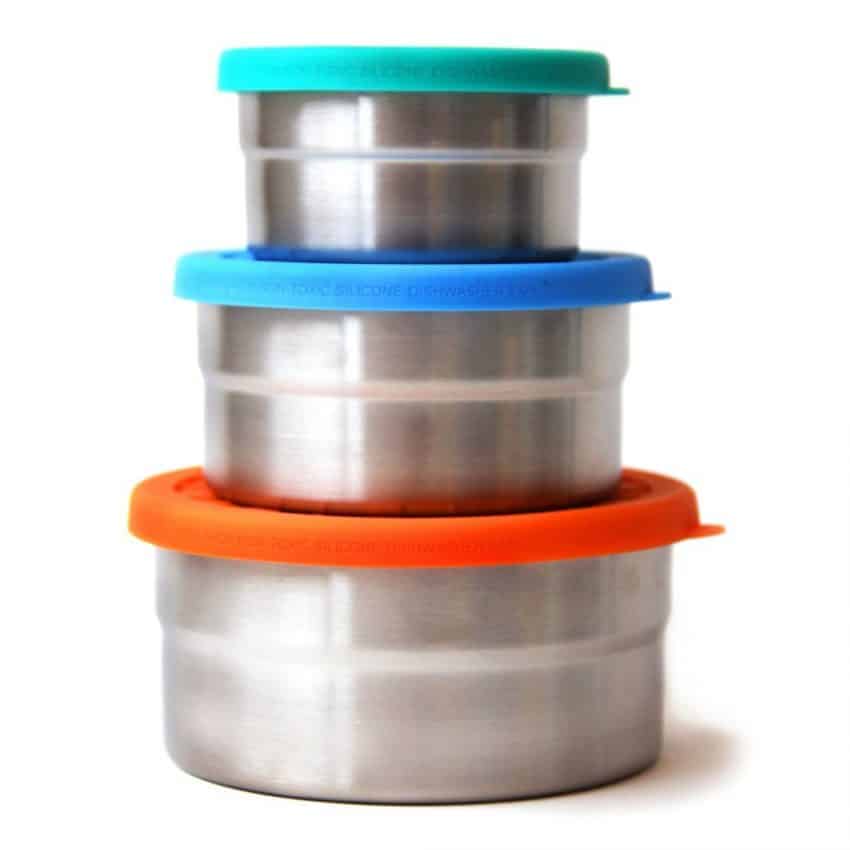
-
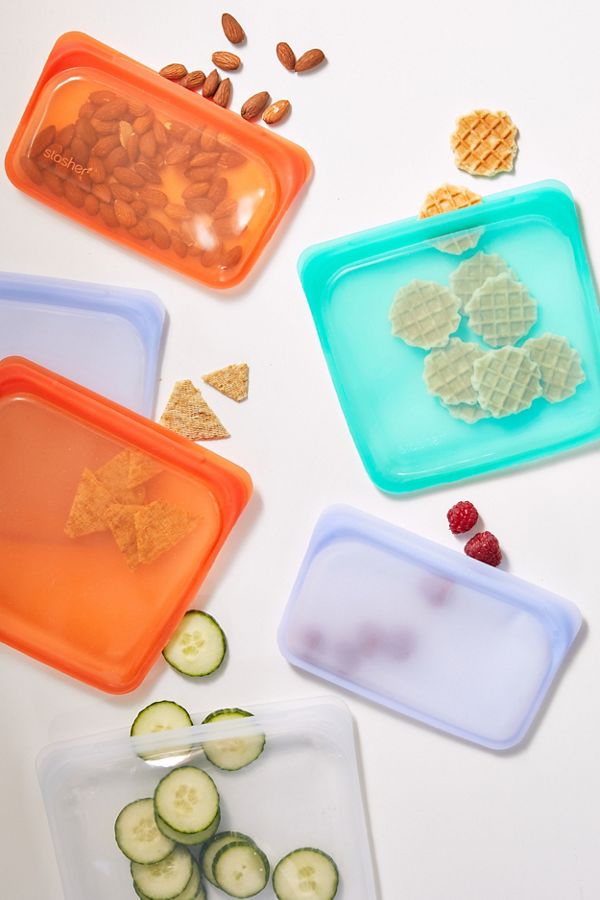 Stasher Reusable Silicone Bags$9.99 – $12.99
Stasher Reusable Silicone Bags$9.99 – $12.99
Budget-Friendly Ways to Reduce Toxins in Food
The simplest way to eat more healthfully is to cook for yourself–this also happens to be the cheapest! Of course, it takes time and superior organization skills (neither of which I have much of). Organic food can be expensive–I prioritize what produce to buy organic (and what conventional produce I can get away with) by using EWG’s “Dirty Dozen” and “Clean Thirteen” lists. If you’re on a tight budget, I wouldn’t even worry about food storage–cutting out cheap convenience foods will have a bigger impact than spending that money on glass food storage.
My 20/80 Rule On Reducing Toxins
As I said before: we cannot discount our mental health when we decide we want to live “healthier.” I abide by an 20/80 rule when it comes to my “clean” lifestyle–and no, that’s not a typo.
Living a 20/80 clean life means that I don’t worry about or try to control most things in my home. Instead, I endeavor to eliminate (or at least reduce) the most important 20 percent of toxins. I then simply choose not to stress about the other 80 percent. (The exception here is healthful food– I really do try to make sure that 80% of what I eat is not total junk!).
I hope the steps above will help to guide you as you embark on your own cleaner living journey, and I look forward to hearing your questions and suggestions.
Stay sane,


Maia, Founder & CEO

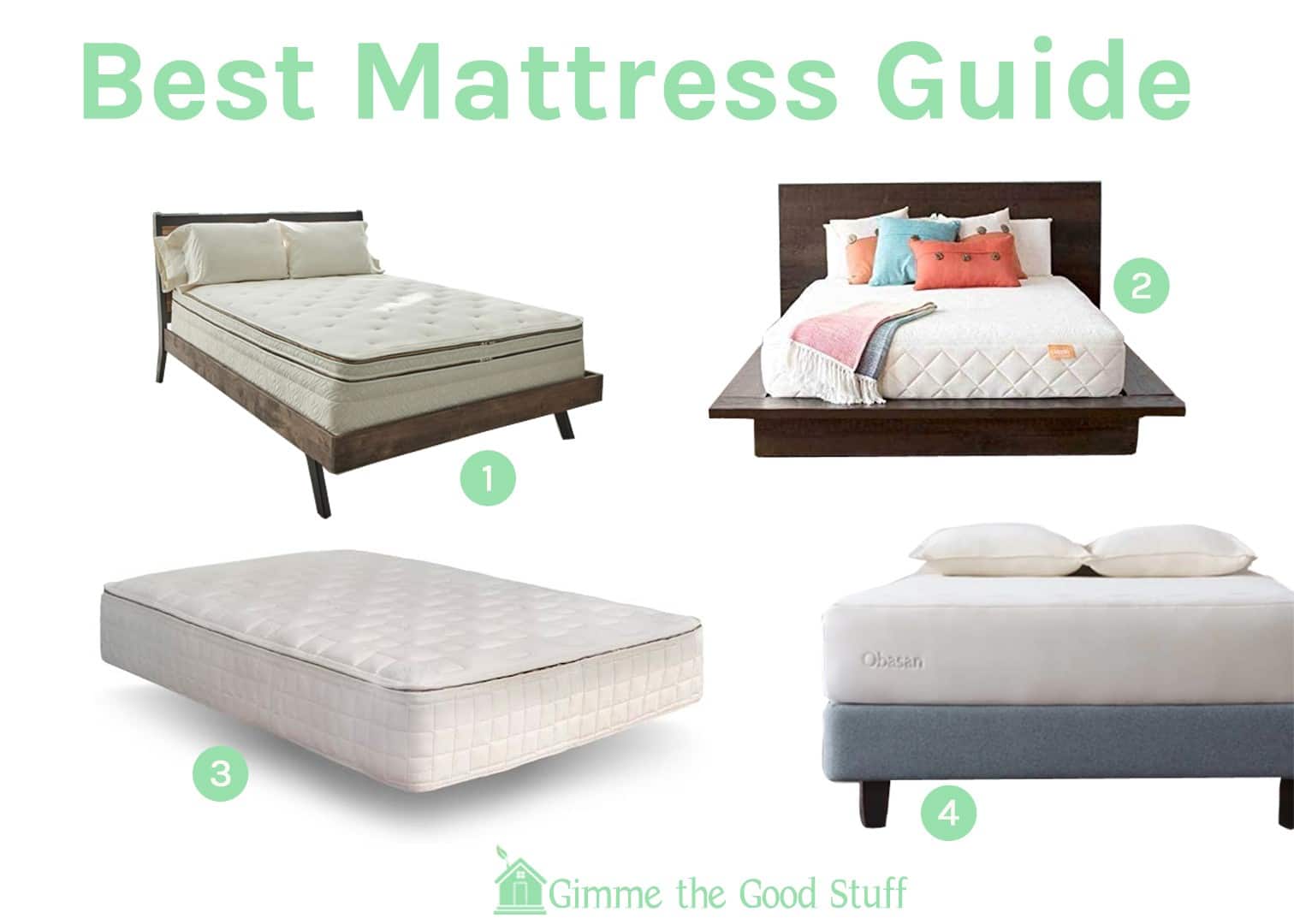
Lorem ipsum 123 789